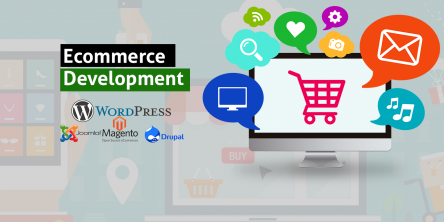OneDrive vs SharePoint: A Guide To Choosing the Best Option For Your Business
Microsoft's Office 365 suite of services includes two particularly interesting names: SharePoint and OneDrive. It is not only because of the features and functionalities they offer but also because the differentiation between the two can often seem like a big task for the uninitiated. Also, both SharePoint and OneDrive deliver online document services and are excellent choices for storage as well as file sharing. Furthermore, both are aimed at the small to enterprise-size business segments and are equally well suited for any industry.
Microsoft describes SharePoint as a collaboration tool designed for businesses that enable teams to not only open, share, and access files but also allows different members in the group to work on the same document, together, in real-time. On the other hand, OneDrive is a digital document storage hub that is used by both business teams as well as individuals who are seeking a centralized hub to access, save, and store their files. Furthermore, OneDrive also allows file-sharing along with versioning, which means it is not merely an online filing cabinet.
Now, you see why it can be so confusing for people to pick between the two? Let's understand the differences between the two and how to help get a better idea of which better suits your business needs.
- Compliance and security: Though both OneDrive and SharePoint leverage encryption to protect documents, the latter is the only one that offers an additional layer of protection via a standalone server. Furthermore, SharePoint’s range of granular controls along with user access abilities are immensely helpful in exercising control over client data and internal security.
- Document management: Though OneDrive for Business gets the same document offerings, including workflows, auditing, templates, and version control, like SharePoint, it does not understand business marketing tools. It includes website and social media connections, which gets integrated into SharePoint's infrastructure. Besides that, SharePoint also provides a massive array of tools for cross-company file and document management and collaboration.
- Cloud vs. on-premise: While on-premise SharePoint enables administrators to control the platform's look and feel, it also means they are responsible for monitoring systems, tending to security breaches, and managing updates. Furthermore, clients who pick the on-premise SharePoint solution can also buy OneDrive separately with all its features getting incorporated in SharePoint.
Now that we have discussed the fundamental differences, let us take a quick look at their respective pros and cons:
SharePoint
Pros:
- It provides a unified, practical record management system for both storing and sharing files.
- It integrates seamlessly with a variety of other software. Moreover, people who use SharePoint for their business solutions, also have the choice to access their documents from other applications in SharePoint, like MS Office.
- Because it is exceptionally scalable, SharePoint can tackle a variety of business requirements in one go, thus saving not only money but also time and valuable IT resources.
Cons:
- It is quite expensive; more so if one goes with the conventional on-premise intranet option, which translates to an exorbitant initial cost for license, customization, and infrastructure.
- To set it up, you will most likely need assistance from an IT specialist familiar with this particular software.
- It takes a while to adapt and completely roll out the product across the company.
OneDrive
Pros:
- Instead of saving files to a folder on the user's desktop or laptop, it allows them to store it in the cloud.
- Documents are automatically saved to users' OneDrive folder when they save files locally in a synced folder.
- It enables organizations to preserve OneDrive files even after the Office 365 account associated with those files getting deleted.
Cons:
- Though external sharing facilitates collaboration, it also increases the risk of confidential data loss since any user can access files without logging in.
- It does not get any management features like reporting or auditing.
- While the default storage capacity for each user is 1TB, the maximum storage allowance is just 5TB.
It depends on why and how one intends to use the service. However, once you do make your choice, it is advisable to find a trusted service provider for developing custom applications with SharePoint or OneDrive to ensure you can leverage their full potential.
Similar Articles
Explore the power of Scala in modern web development! Discover its advantages, best practices, and real-world case studies. Elevate your coding journey today.
Do you know 24% of retail purchases will be online by 2026? Hence, eCommerce development is the trend, providing lucrative business opportunities to budding entrepreneurs. However, developing an eCommerce website is not an offhand process.
Wave goodbye to the cost and efforts of separate web application development for every operating system out there just to reach your customer base. Progressive Web Apps (PWAs) are here to open up a whole new world of accessibility for you.
Your website is the center of your business’s digital ecosystem, just like a brick-and-mortar shop. What matters here is the perception of the prospective customer visiting and the experience one is taking away.
When you are an entrepreneur, every decision you make needs to be well-informed and strategic. As every decision you make will impact your bottom line and your ability to grow. That's why thinking carefully before choosing any eCommerce platform is essential.
Are you a business owner planning to establish an online presence but unsure of the web development cost? A well-designed and functional website is crucial for a business’s success. However, determining the cost of web development is one of the common challenges faced during the website development process.
The increasing prevalence of cyber threats and the potential risks associated with data breaches make it crucial to implement robust security measures. This helps protect your business, customer information, and brand reputation.
In the age of digital technology, every business must have an online presence. A website is crucial in establishing this presence, making web development an integral part of modern business. To create a successful website, choosing a reliable web development platform is imperative.
App developers have discovered React Native app development to be the key to building robust mobile applications, a trend that has increased since 2015.





e6f0.png)



